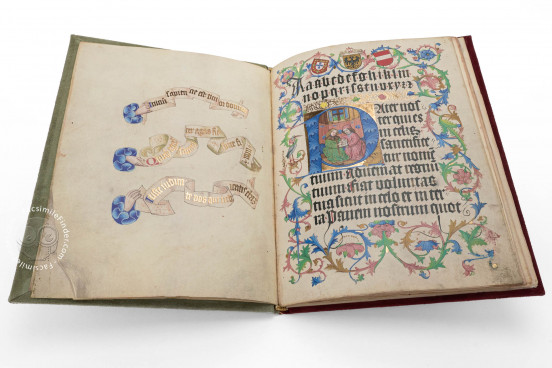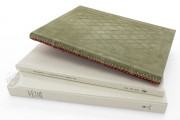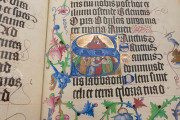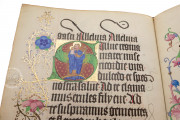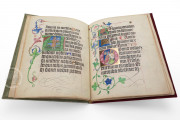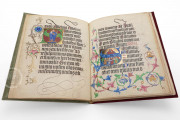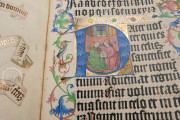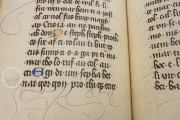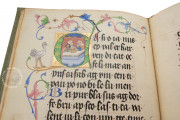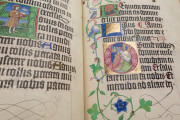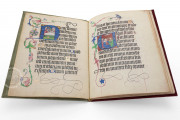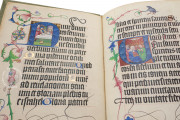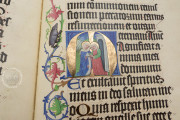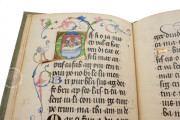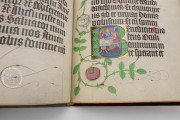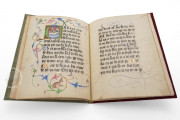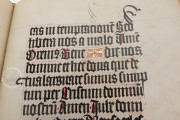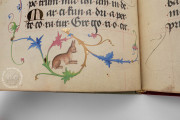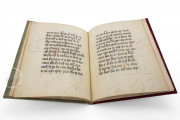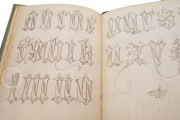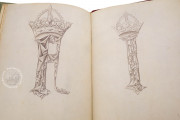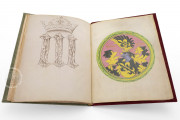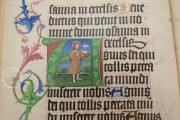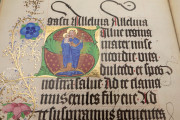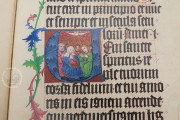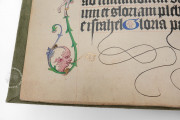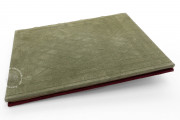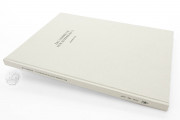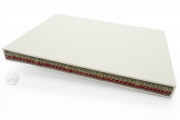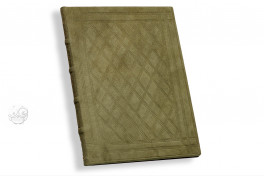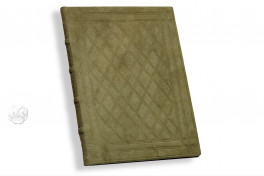During the Middle ages, the main teaching subjects were generally handwritten on simple blackboards, or on un-illustrated folding cardboard panels. Opulently decorated textbooks were incredibly rare, though a few exceptions did exist. One of the latter is this exceptional manuscript associated with emperor Maximilian I, which was penned and decorated in Vienna.
An Opulent Work of Art for Learning to Pray, Write, and Read
Composed about 1466 by imperial Chancellor Wolfgang Spitzweg, this codex was used by the young Emperor to learn his ABC's and fundamental prayers such as the Our Father and Hail Mary, but also jingles in Latin and German: more or less the basic contents of the time's syllabus. The Textbook for Emperor Maximilian is the oldest copy in a gathering of three known textbooks especially crafted for Maximilian by the very same illuminator, who nevertheless remained anonymous.
The Emperor's First Contact with Book Illumination
The brightly decorated gold and color miniatures, the illuminated initials, the daily-life scenes and the religious episodes, show narrow references to the manorial student. The cultural and historic significance of the Textbook of Emperor Maximilian has not been accurately determined by scholars. Maximilian I has been described as being "the last knight and the first mercenary": it was probably through this book that the exceptional prince, under whom the Habsburg dynasty became one of the mightiest families in Europe, learned to read. The charming artistic value of this vellum manuscript was possibly the first contact young Maximilian had with book decoration. This artistic expression delighted him so much that in later years he was to become a major commissioners of illuminated books.
We have 2 facsimiles of the manuscript "Textbook for Emperor Maximilian":
- Das Lehrbuch für Kaiser Maximilian (Standard Edition) facsimile edition published by Akademische Druck- u. Verlagsanstalt (ADEVA), 2005
- Das Lehrbuch für Kaiser Maximilian (Real Gold Edition) facsimile edition published by Akademische Druck- u. Verlagsanstalt (ADEVA), 2005

